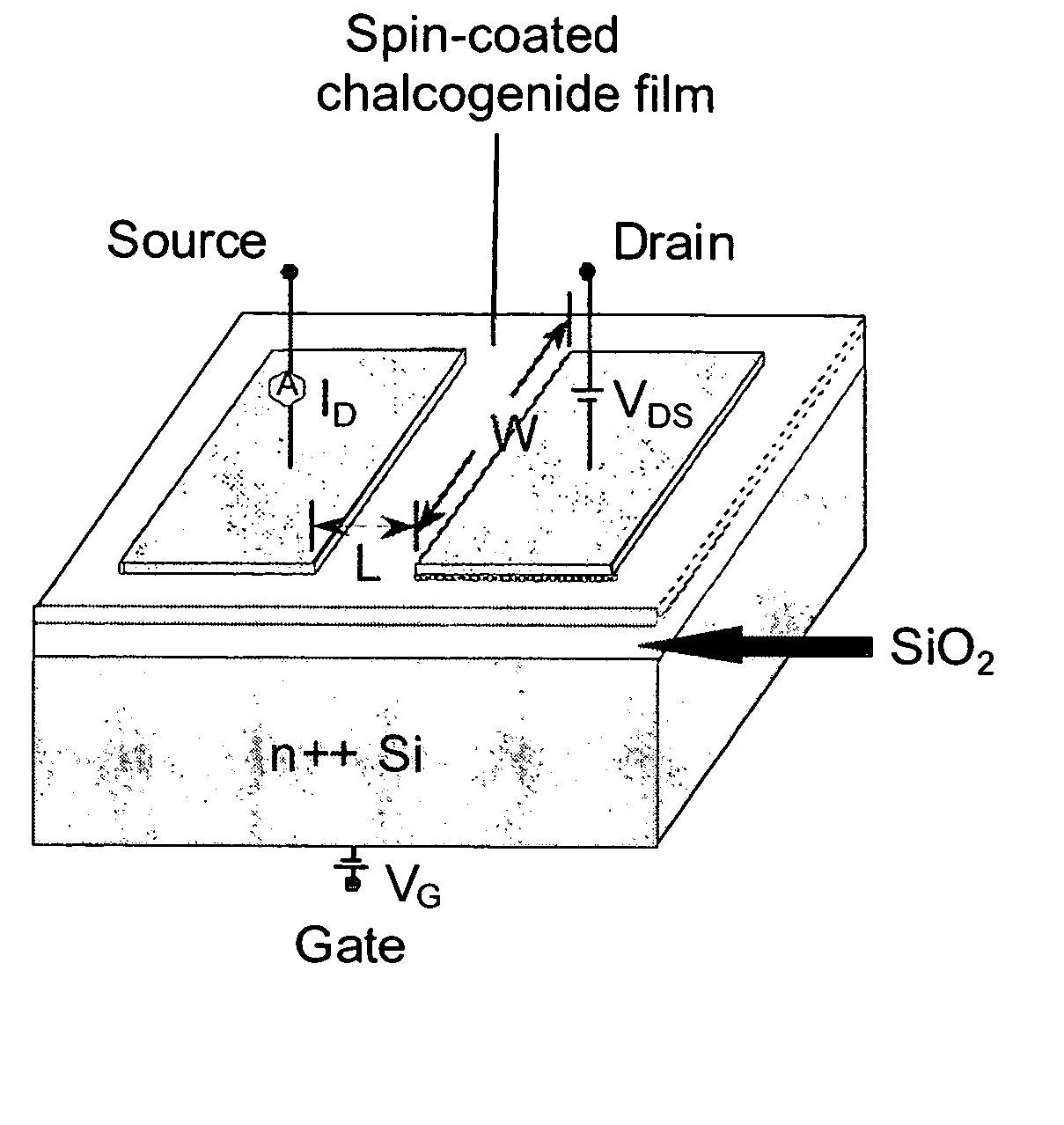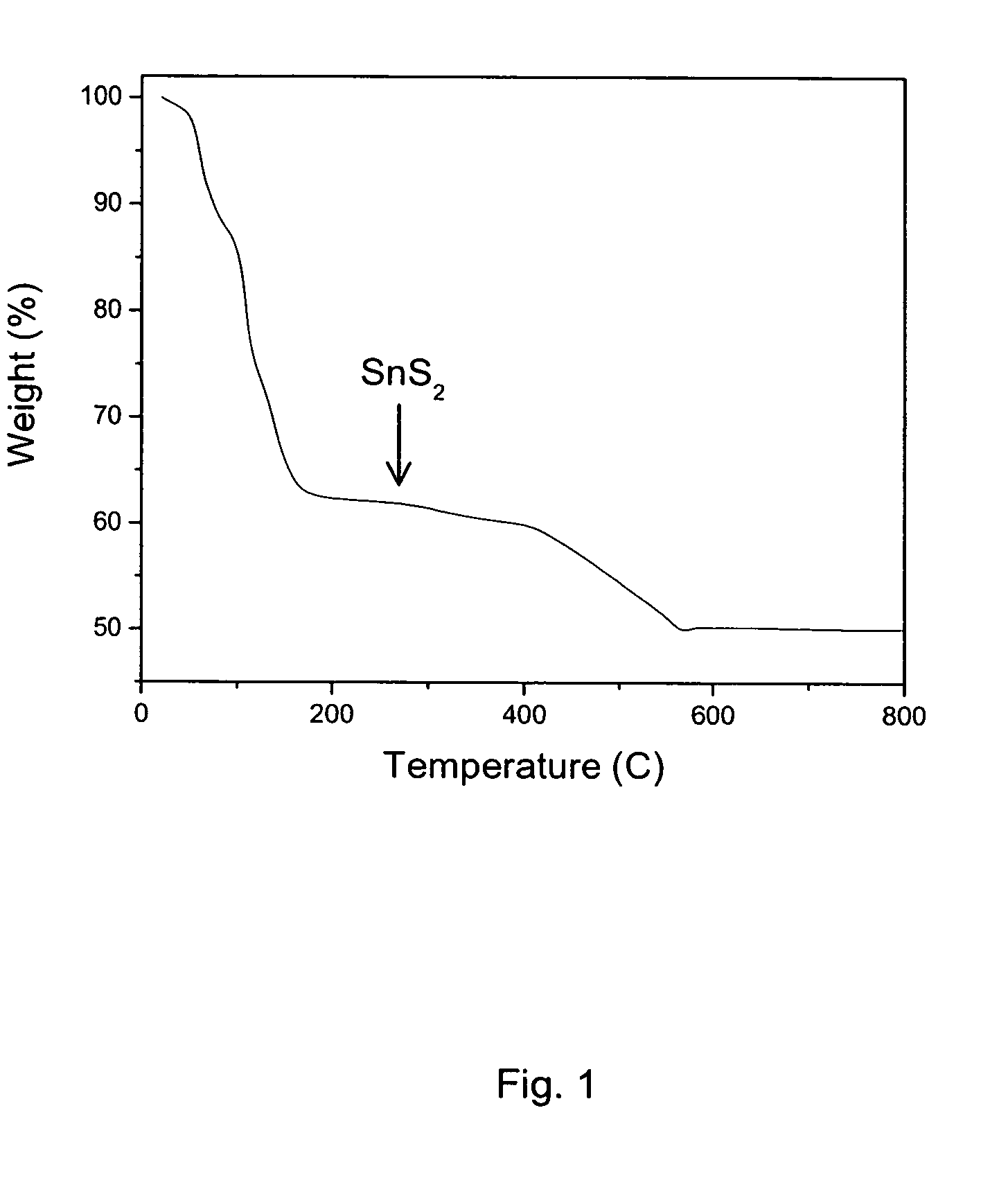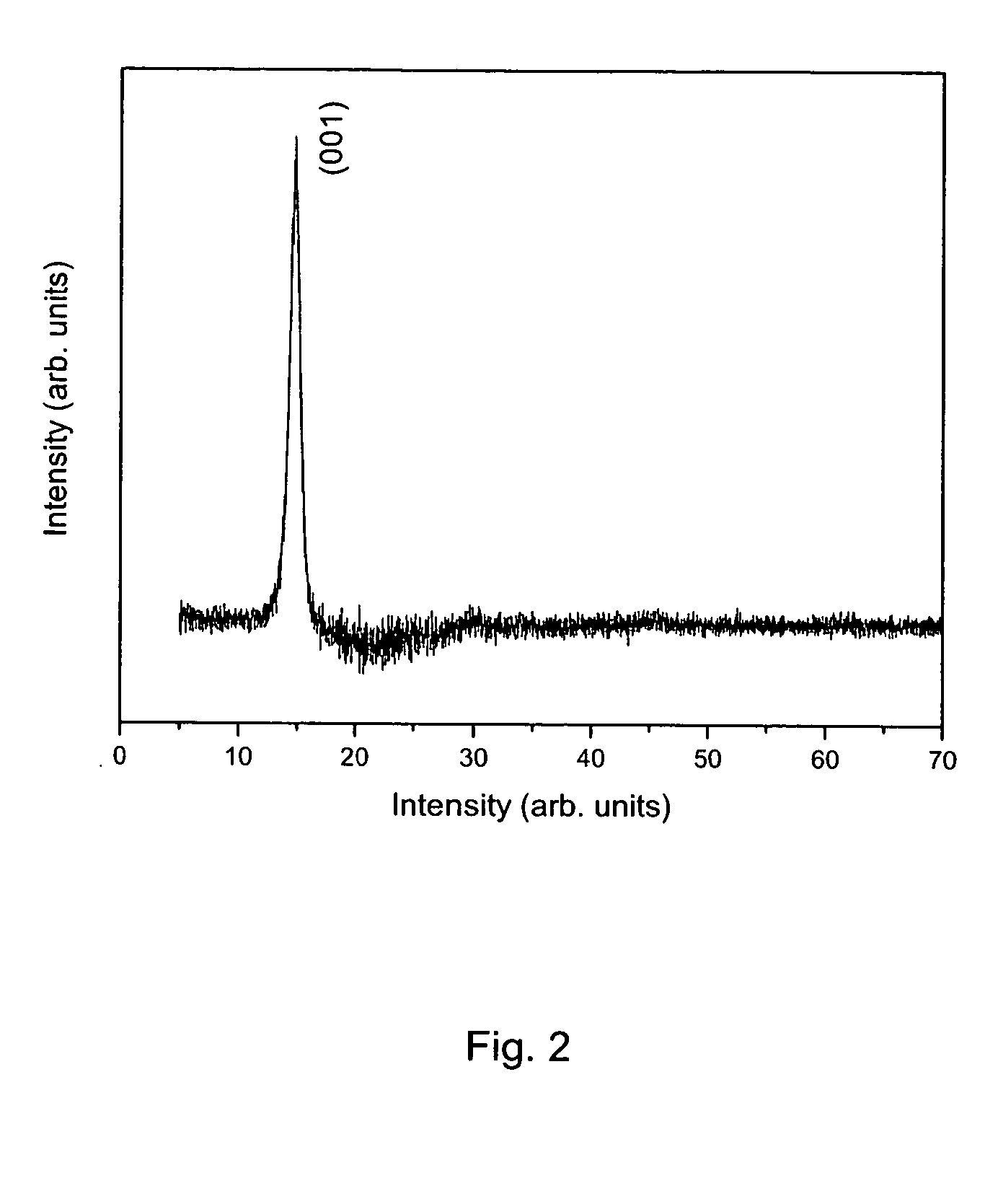Hydrazine-free solution deposition of chalcogenide films
a technology of chalcogenide film and solution, applied in the direction of liquid/solution decomposition chemical coating, crystal growth process, coating, etc., can solve the problems of limited application of amorphous silicon, slow device speed, and the need for plasma enhanced chemical vapor deposition to achieve the effect of preparing the hydrazinium precursor more efficiently
- Summary
- Abstract
- Description
- Claims
- Application Information
AI Technical Summary
Benefits of technology
Problems solved by technology
Method used
Image
Examples
example 1
A solution of SnS2 was formed by dissolving 0.274 g SnS2 (1.5 mmol) in 1.0 ml hydrazine and 0.048 g sulfur (1.5 mmol). Substantial bubbling is observed during the dissolution process, presumably as a result of evolution of primarily nitrogen during the reaction. The dissolution is somewhat slow at room temperature, requiring approximately 4-6 hours of stirring to produce a clear yellow solution. The solution was filtered and the filtrate was evaporated under a flow of nitrogen gas, ultimately yielding 0.337 g of yellow powder. Thermal analysis of the powder indicates that the resulting solid decomposes to form SnS2 at a relatively low temperature, essentially by 200° C., with a weight loss of 38% observed during the process (FIG. 1).
A film of the above-described precursor can readily be deposited on a cleaned quartz substrate by dissolving 0.055 g SnS2 (0.3 mmol) in 0.5 ml hydrazine and 0.010 g sulfur (0.3 mmol). Each substrate was precleaned sequentially in aqua regia, toluene, ...
example 2
SnSe2 films were also deposited using the above-described technique.
0.277 g SnSe2 (1 mmol) was readily dissolved (in several minutes, with stirring) in 1 ml hydrazine when 0.079 g Se (1 mmol) have been added, yielding ultimately a light yellow solution. The light yellow coloration suggests the lack of formation of polychalcogenides during the process although if larger quantities of Se are added, a darker coloration of the solution is observed. Substantial bubbling is observed during the dissolution process, presumably as a result of evolution of primarily nitrogen during the reaction. Evaporating the solution under flowing nitrogen gas over the period of several hours leads to the formation of approximately 0.450 g of a yellow crystalline powder. The powder rapidly loses weight while sitting on a balance at room temperature, suggesting incorporation of solvent (i.e., hydrazine) within the structure, which slowly dissociates from the sample.
Single crystal structure refinement o...
example 3
In this example, the ammonium-based tin(IV) sulfide precursor was synthesized by dissolving 548.5 mg of SnS2 (3 mmol) in 85 ml of 50 wt. % aqueous ammonium sulfide, (NH4)2S, over a period of 4 days. The solution was filtered through a 0.45 μm glass microfiber filter and the resulting filtered solution was slowly evaporated under a flow of nitrogen gas over a period of several days, leading to a yellow product (˜1.05 g).
The product was repeatedly washed / filtered with methanol until the resulting filtrate was colorless and the thermal analysis scan on the final product yields a weight-loss transition at −150° C. (to yield SnS2) of approximately 30% (FIG. 5). This indicates an approximate composition, (NH4)2SnS3. The product is nominally amorphous, i.e., no X-ray pattern is observed in a powder diffractometer. The weight loss, which corresponds to loss of ammonia and hydrogen sulfide, is initiated at temperatures as low as ambient temperature, indicating the ease with which the mate...
PUM
| Property | Measurement | Unit |
|---|---|---|
| temperature | aaaaa | aaaaa |
| temperature | aaaaa | aaaaa |
| temperatures | aaaaa | aaaaa |
Abstract
Description
Claims
Application Information
 Login to View More
Login to View More - R&D
- Intellectual Property
- Life Sciences
- Materials
- Tech Scout
- Unparalleled Data Quality
- Higher Quality Content
- 60% Fewer Hallucinations
Browse by: Latest US Patents, China's latest patents, Technical Efficacy Thesaurus, Application Domain, Technology Topic, Popular Technical Reports.
© 2025 PatSnap. All rights reserved.Legal|Privacy policy|Modern Slavery Act Transparency Statement|Sitemap|About US| Contact US: help@patsnap.com



